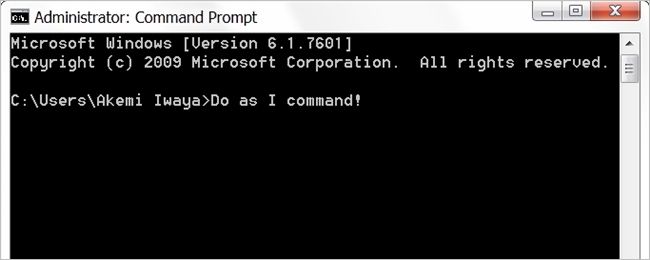Most of the time our programs work just like we need them to, but every once in a while you have one that is less than cooperative and leaves you looking for a way to fix its 'attitude' problem. Today's SuperUser Q&A post has some great suggestions to help a frustrated reader get the results he needs.
Today’s Question & Answer session comes to us courtesy of SuperUser—a subdivision of Stack Exchange, a community-driven grouping of Q&A web sites.
The Question
SuperUser reader user418119 wants to find a way to keep a program window open long enough to see the results:
I am trying to run an iteration program. Whenever I click on it, it opens then terminates. When I open the input text file using the program, the iteration completes, then the window instantly closes. How can I:
1. Run it so that the window does not close (and I can see my results)
Or
2. Manage to do the same thing via Command Prompt
I am not super familiar with doing stuff via Command Prompt.
Is there a way to make user418119's program window stay open long enough to see the results?
The Answer
SuperUser contributors mg30rg, misha256, and Ranayna have the answer for us. First up, mg30rg:
You can create a batch file (.bat) containing two lines. The first one is your application's command line and the second one is "PAUSE". It will keep the Command Prompt window open until you press a key or close it using the "X" button. The advantage of this solution is that you can have a separate shortcut to the .bat file so that you can either start your program with or without pausing at the finish.
Followed by the answer from misha256:
This will leave the Command Prompt window open even after MyApp.exe terminates:
- cmd /K "C:\SomeFolder\MyApp.exe"
You can create a shortcut with the above. This solution works with all console programs and does not require you to go through Command Prompt every time or modify the original .exe file (which you usually cannot).
Incidentally, the /K switch has been around since NT days.
And our final answer from Ranayna:
Another way which is quite useful if the path to the .exe file is a complicated one: Open a Command Prompt window and just drag the .exe file into the window. The full path to the .exe file will be pasted into the Command Prompt window and you just have to press Enter. There is no need to cd into any paths.
Have something to add to the explanation? Sound off in the comments. Want to read more answers from other tech-savvy Stack Exchange users? Check out the full discussion thread here.

